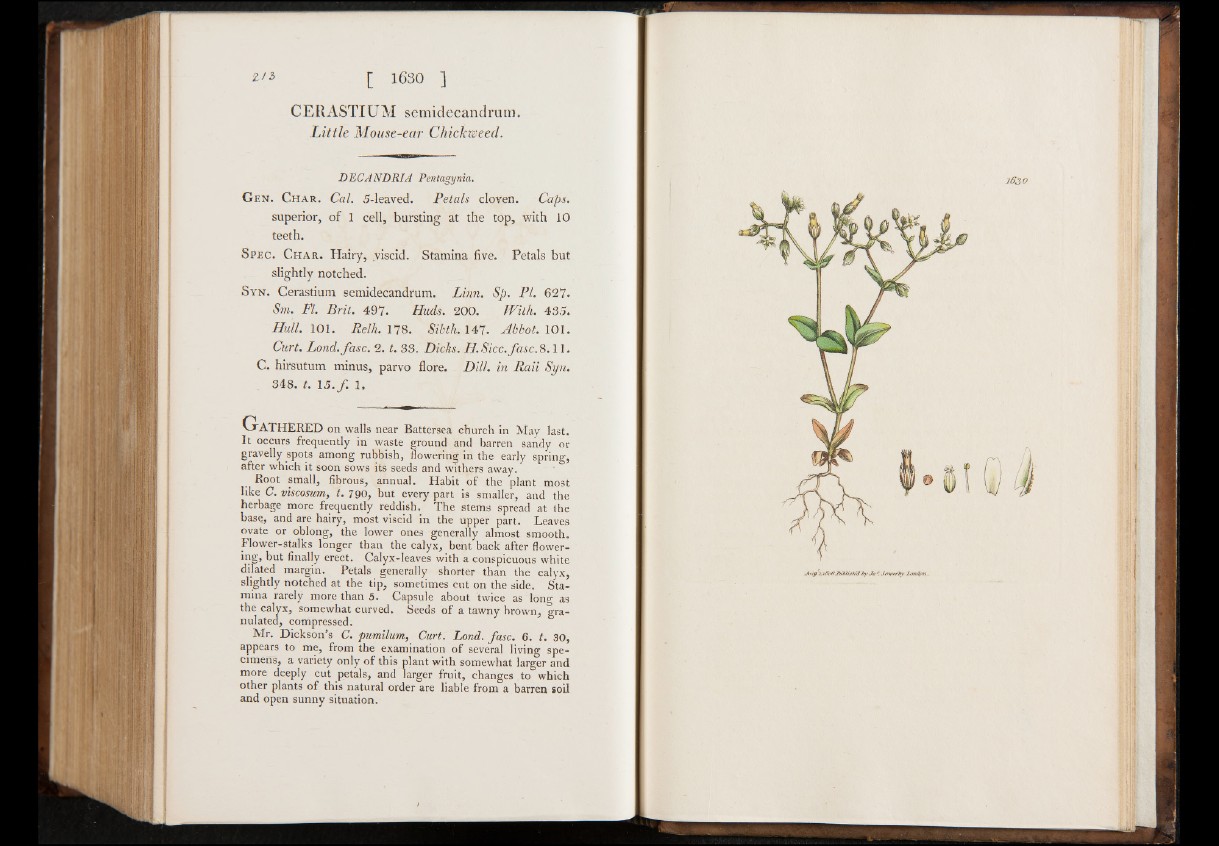
in> [ 1630 ]
CERASTIUM semidecandrum.
Little Mouse-ear Chickweed.
DECANDRIA Pentagynia.
Gen. Char. Cal. 5-leaved. Petals cloven. Caps.
superior, of 1 cell, bursting at the top, with 10
teeth.
Spec. Char. Hairy, viscid. Stamina five. Petals but
slightly notched.
S y n . Cerastium semidecandrum. L in n . Sp. P L 627.
Sm. F l. B rit. 497. Huds. 200. With. 435.
H ull. 101. Relh. 178. Sibth. 147. Abbot. 101.
Curt. Load. fa s c . 2. t. 33. Dicks. II . S icc.fa sc. 8 . 1 1 .
C. hirsutum minus, parvo flore. D ill, in R a ii Syn.
348. t. 15. / . 1.
GATHERED on walls near Battersea church in May last.
It occurs frequently in waste ground and barren sandy or
gravelly spots among rubbish, flowering in the early spring,
after which it soon sows its seeds and withers away.
Root small, fibrous, annual. Habit of the plant most
like C. viscosum, t. 790, but every part is smaller, and the
herbage more frequently reddish. The stems spread at the
base, and are hairy, most viscid in the upper part. Leaves
ovate or oblong, the lower ones generally almost smooth.
Flower-stalks longer than the calyx, bent back after flowering,
but finally erect. Calyx-leaves with a conspicuous white
dilated margin. Petals generally shorter than the calyx,
slightly notched at the tip, sometimes cut on the side. Stamina
rarely more than 5. Capsule about twice as long as
the calyx, somewhat curved. Seeds of a tawny brown, granulated,
compressed.
Mr. Dickson’s C. pumilum, Curt. Land. fasc. 6. t. 30,
appears to me, from the examination of several living specimens,
a variety only of this plant with somewhat larger and
more deeply cut petals, and larger fruit, changes to which
other plants of this natural order are liable from a barren soil
and open sunny situation.
&